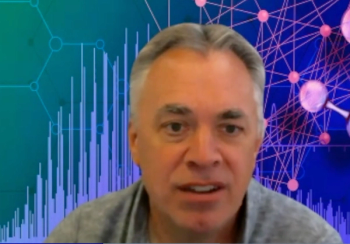
Extracting Tiny Samples for Mass Spectrometry Analysis
Guido F. Verbeck, an associate professor in the Department of Chemistry at the University of North Texas (Denton, Texas), has been developing a technique called direct analyte-probed nanoextraction (DAPNe). Verbeck is using DAPNe, coupled to nanospray ionization mass spectrometry (MS), in a variety of applications, including forensic analyses. Spectroscopy asked Verbeck about his work with this method and how it is used.
Guido F. Verbeck, an associate professor in the Department of Chemistry at the University of North Texas (Denton, Texas), has been developing a technique called direct analyte-probed nano extraction (DAPNe). Verbeck is using DAPNe, coupled to nanospray ionization mass spectrometry (MS), in a variety of applications, including forensic analyses. Spectroscopy asked Verbeck about his work with this method and how it is used.
Can you briefly explain how DAPNe works?
DAPNe works by combining nanospray MS with optical microscopies for spatial designations. Here we can extract areas of interest between 200 nm and 1 µm and directly spray into the mass spectrometer for analysis. We have applied this approach to exacting chemistries within fingerprint ridges, single-cell and single-organelle analysis, forensic lifts for illicit chemistry, and explosive residue and plant and mammalian tissue analysis. This technique is beneficial in analyzing interesting chemistry with greatly reduced matrix effects, essentially reducing the background of peaks that are of no interest to the user.
How is DAPNe coupled to MS different from other direct-coupled surface sampling methods, such as desorption electrospray ionization (DESI), surface sampling probe electrospray ionization, and dielectric barrier discharge ionization source (DBDI)?
The resolution of extraction is on a much smaller scale, 200 nm-1 um, which eclipses the spatial resolution of DESI, direct analysis in real time (DART), matrix-assisted laser desorption–ionization (MALDI) imaging, and the like. We can also change the solvent extraction conditions to go after analytes of interest, such as lipids, proteins, and organics, by using solvents specific for extraction and a large arsenal of charge carriers.
What are the disadvantages or limitations of the DAPNe technique?
The greatest limitation is imaging. Since each sample is extracted, one at a time, imaging is not a high-throughput approach with this technique. We are trying to overcome this limitation by coupling the technique with microfluidic extraction for a continuous sampling platform.
You have applied this technique to forensic analysis, such as to detect trace particles of cocaine in fibers. What results have you seen so far?
We have created an extraction solvent that can look at both organic and salt-based explosives, excreted metabolites, illicit drugs, and proteins. Our greatest feat is single-organelle analysis for lipid profiling and identifying cell heterogeneity.
In using the DAPNe technique for forensic applications, what challenges, if any, have you had to overcome?
For the forensic application, making the technique user friendly for the technician is still a great challenge. We are trying to implement encoding with Raman and bright-field microscopy to help the tech find spots of interest. Another challenge in forensics is “How little is too little,” especially for compounds like cocaine, which sticks to almost everyone’s paper currency and the like.
What are your next steps in this research?
We are currently focusing on single-cell and single-organelle analysis. We have been issued a cancer award to look at cell heterogeneity among cancer cells and healthy cells to look at diagnosis and cell biology.
Newsletter
Get essential updates on the latest spectroscopy technologies, regulatory standards, and best practices—subscribe today to Spectroscopy.



